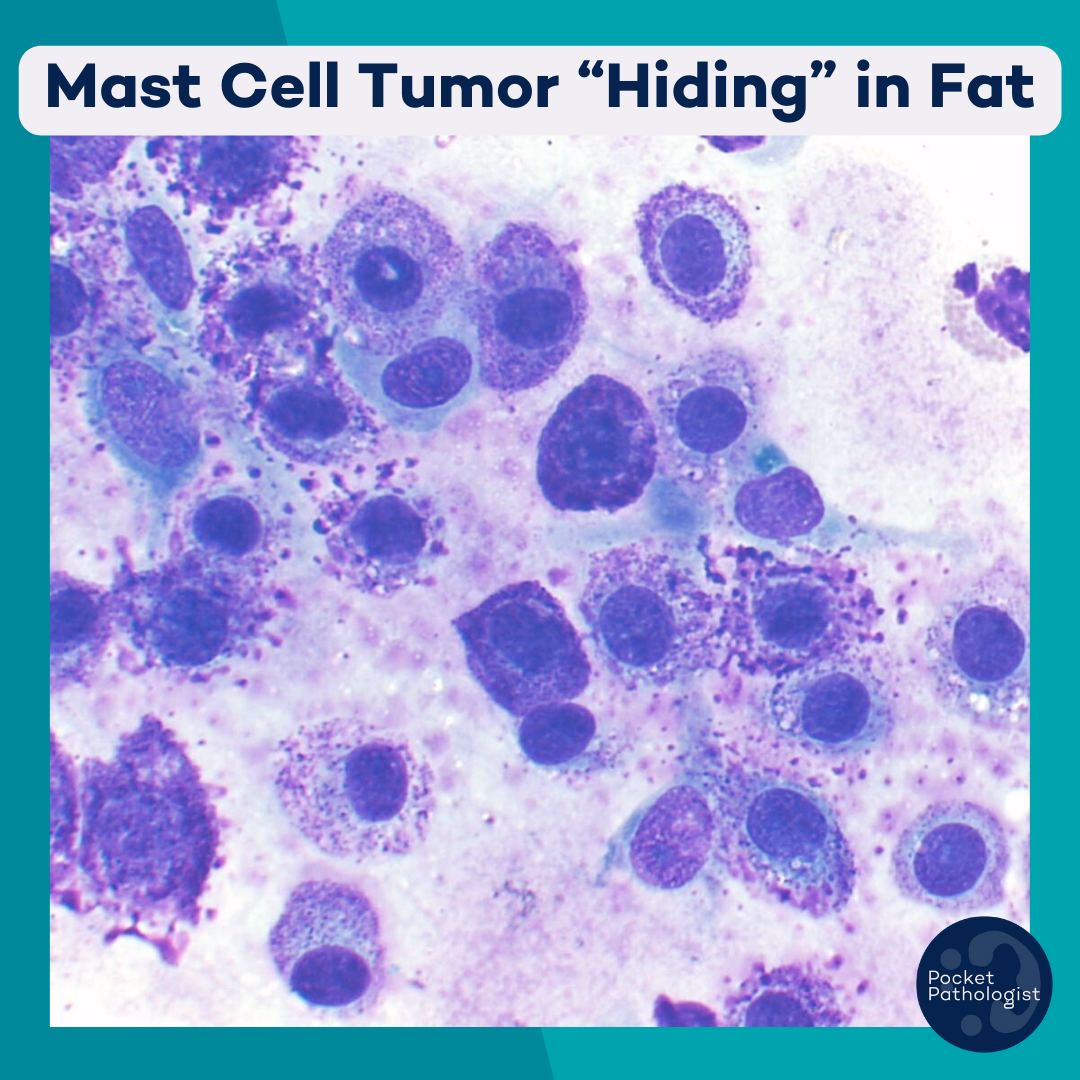The Microscopic Minute
by veterinary clinical pathologist, Dr. Kate Baker
Subscribe to get this emailed to you every week:
I'm back to share a cool case I had this week with Pocket Pathologist telecytology service!
This sample is from a 13 year old dog who has a soft swelling in his ventral neck area.
Let me first say ...
According to my ER veterinarian husband, one of the benefits of being married to a clinical pathologist is you get free fly-by cyto reads. 🙃
He's working overnights in the ER this week. It's about 9 ...
Check out this scary lymph node cytology!

This is an FNA from a regional lymph node in a dog that had a nearby mast cell tumor. The vet aspirated the node to check for metastases....and metastases ...
I got this case through my Pocket Pathologist telecytology service recently and I've been dying to share it with you.
This is an FIV+, outdoor tom cat that showed up 3 weeks ago with large granulate...
This case right here demonstrates just how important cytology is...
10 year old dog with a soft subcutaneous mass.
Submission form: "Suspect lipoma."

Cytology: Nope!
I'm *so* glad this awesome vet...
I get asked this question a lot.
How does fat from a lipoma look different than a liposarcoma?
Well, wonder no more, because I have a handy little graphic I whipped up to share with you!

In a li...


